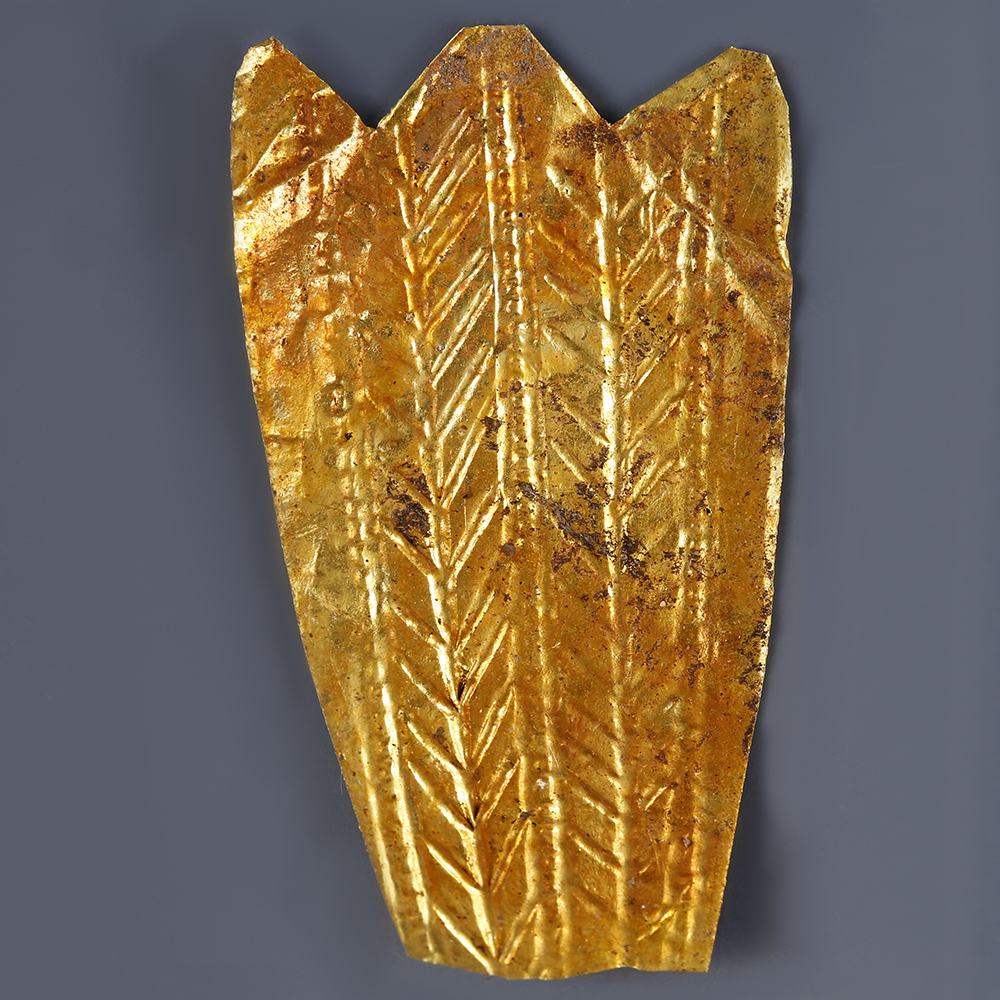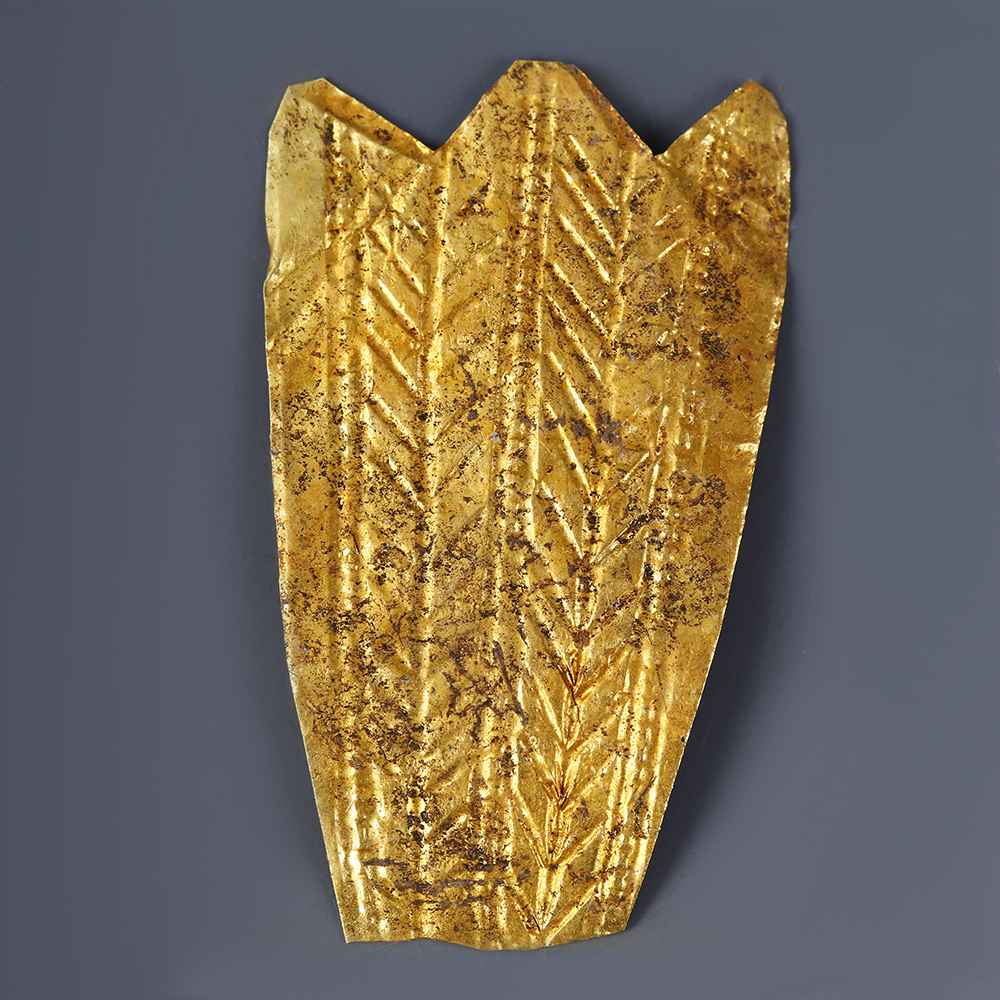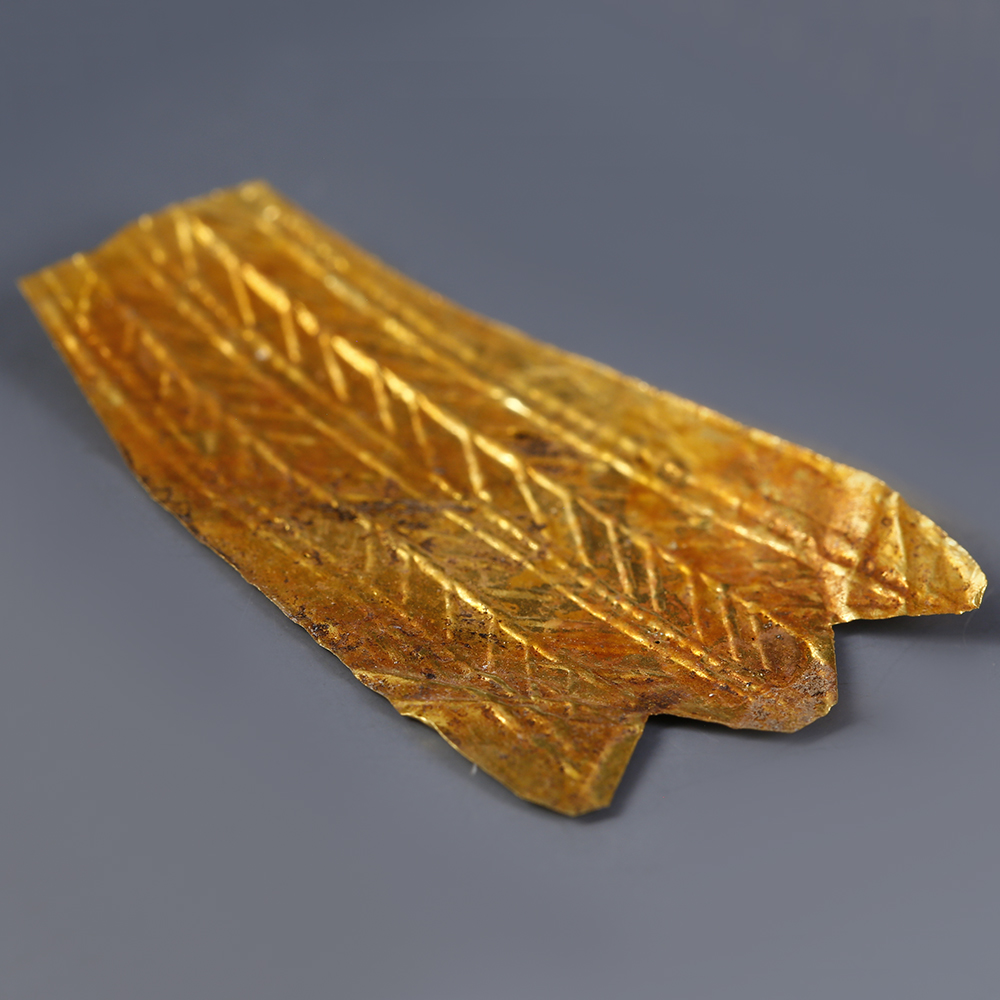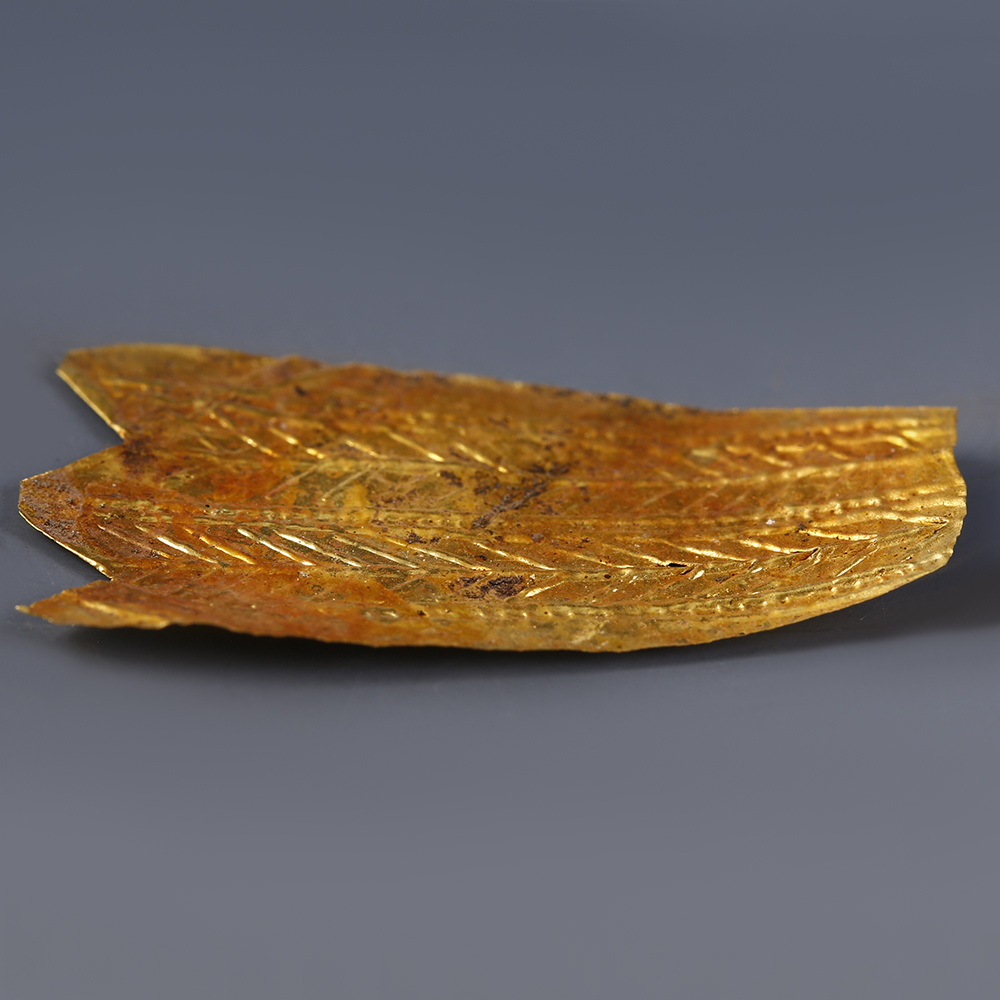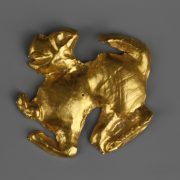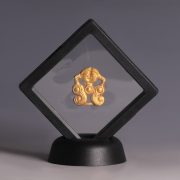In Ancient Greece, as in many ancient societies, jewellery was an important social marker used to demonstrate wealth, social status and privilege. There, however, this was not only true for the living but also for the dead as this diadem reminds us: it was not designed for everyday life, as it appears too delicate and fragile. Rather, it was created for funeral purposes and decorated the forehead of a wealthy deceased. Originally, diadems consisted in plain ribbons tied around the head, used as a symbol of power for men: this simple principle is what inspired gold funerary diadems. However, with time, diadems started being used by women too and became more and more sophisticated and elaborated in shape and decorative motives. The phenomenon reached its peak during the Hellenistic period, with diadems modelled in pure gold in the shape of laurel or oak leaves. Perhaps the most famous example of a full wreath is the myrtle wreath found at Vergina, in the tomb of Philip II, and supposedly belonging to Meda, the Thracian princess and fifth wife of Philip II.
Hellenistic Gold Fine Repousse Leaf from a Gold Wreath
$217.99
A beautiful Greek Hellenistic gold sheet hammered from a thin layer of high karat gold and decorated with a geometric pattern, rendered in repousse technique. Such gold sheet might have been an element that formed part of a gold wreath, which were modelled on real-life laurel or oak wreaths worn at religious ceremonies or given as prizes to winning athletes and poets. Due to their fragile nature gold wreaths were not typically worn but were meant as dedications at temples to the gods, or more-likely placed in graves as offerings.
Provenance: Ex SM collection, Isreal, acquired 1970 - 1999, entire collection had an export license (not provided).
Condition: Excellent.
SOLD
| Weight | 0.3 g |
|---|---|
| Dimensions | L 4 cm |
| Culture | |
| Metal | |
| Region |
